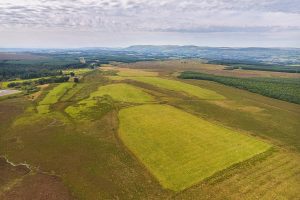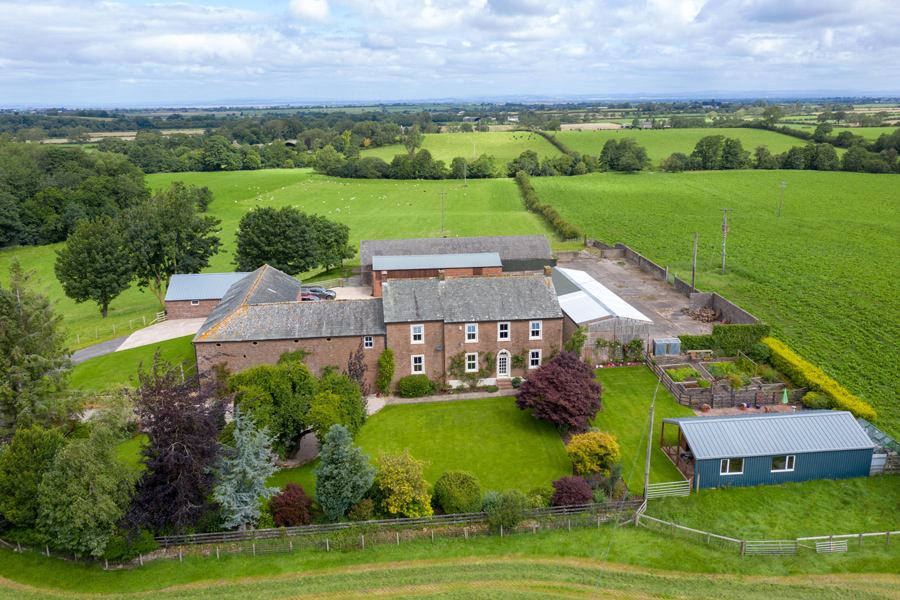As timing and strategy for selling in 2021 are more important than ever, D&R is offering no-obligation, free appraisals to help clients assess their sale prospects. D&R Sales Director George Hipwell says demand for appraisals is on the rise because property and landowners have a growing number of options to consider.
Land and property in Scotland’s Central Belt and in the Lake District have always been strong markets but there are new opportunities across the regions for lifestyle property. An emerging market is also developing for pockets of low output land with environmental potential as new types of buyers are speculating on the potential for future subsidy income. Potential sellers should seek professional advice to ensure maximising value from their land.
To date, approximately 15,000 acres of farmland has been publicly marketed in 2020, a record low. Uncertainty over capital taxation relief, reforms to farm subsidies, trade deals and record low-interest rates have all been factors in shaping land prices this year.
Low supply coupled with progressive farm businesses looking to expand, alongside the record low-interest rates and strong asset base, means excess demand for land is driving the price.
2020 has seen a significant variation in prices for land class by region and characteristics, but prices have held well compared to 2019 and in some cases are attracting a premium in a competitive market. The key desirable characteristics remain the same, land quality, size of holding, provision of good quality fixed equipment and location.
Farmland, forestry and rural residential market weathered the challenges of 2020 well. How will Natural Capital affect future sales? What are the effects of Covid on residential sales? Read overleaf to find out more.
2020 has been a strange year in all senses; it will be the last year in which the UK is part of the European Union and Coronavirus has altered the way we all live our lives to highlight the obvious two factors which have also had a material impact on the farms, land and rural property market in 2020.

There are some new market trends, including a more prominent desire for diversification opportunities and an eye to what options Natural Capital and a new subsidy regime may bring. Holiday lets, glamping pods, and livery stabling are just some examples of this. Speculating on the potential for future subsidy income, there are new types of buyer emerging for pockets of low output land that has environmental provenance. In the past, these small parcels of less productive land had little value and sold for less. Perceived as a lower risk lower cost investment, they are now attracting interest from investment buyers.
For the past 3 years, the market for forestry and planting land has been strong and values have only strengthened in the last 12 months. Competition, driven from a wider array of potential buyers seeking tangible assets as a safe haven in the current volatile stocks and shares markets, is driving much of this and is a reflection of the strength of the asset which farmland and forestry are. The strength of the planting land market provides opportunities for farms to invest in the farm business without needing to reduce the productive capacity of the holding. Despite low-interest rates, the uncertainty of trade relations with Europe from 1st January 2021 onwards means that this may be seen as preferential to committing to loan repayments.
In Southern Scotland, land and a farm in Dumfries & Galloway recently came to the market and were under offer in around 2 months. The land was sold for planting – which we see as a particular area of growth for 2021 as carbon trading develops. (see more in our woodland feature)
Rural Residential Market
The rural residential market has seen an upturn in enquiries since the first lockdown. The market for rural properties with land and outbuildings was always strong in the Central Belt of Scotland, within easy reach of major towns and cities. Post lockdown, so long as there is a good internet and mobile phone connection, space to create a home office or convert an outdoor building or space for an office then proximity to the Central Belt is less important.
This increased interest has brought new energy across the board, with areas like Aberdeenshire, Dumfries and Galloway and Cumbria seeing a significant upturn in market activity with a record number of enquiries and interest from potential buyers across the border and Southern England.
The key characteristics for buyers of rural residential property continues to be a good sized plot with garden and the ability to have a home office, property features such as stoves, open fires or aga, outbuildings or stables and paddocks. The ‘sweet spot’ for land is between 3 acres and 5 acres but up to 10 acres is still very desirable. Properties with acreage between 10 acres and 100 acres are also attracting interest from a more bespoke part of the market, providing new opportunities for vendors.
“It’s not only the interest but it’s the speed of deals been brokered that shows the strength of the current market.”
With so many new opportunities emerging combined with existing market trends and the fine balance of supply and demand, it’s important to explore the true worth of your assets, enabling you to decide if selling in 2021 is the right option.
Our professional advice on timing and strategy has the potential to add value to your business. For a confidential, no-obligation appraisal call our Sales Director George Hipwell on 0131 449 6212 or your local D&R office.



